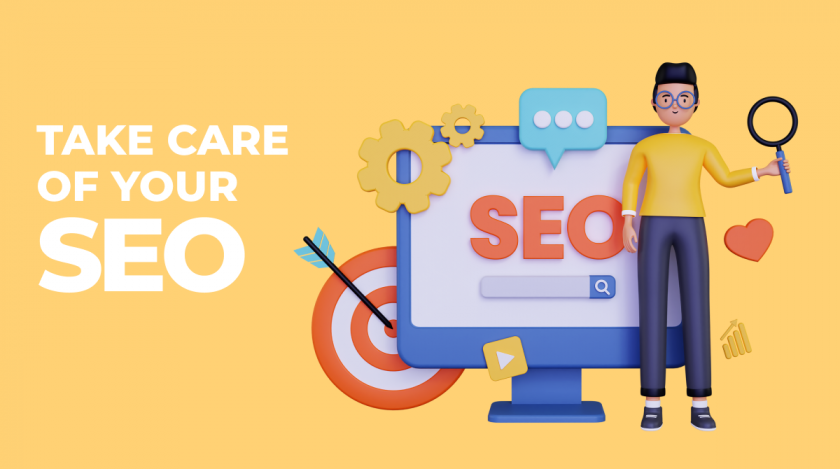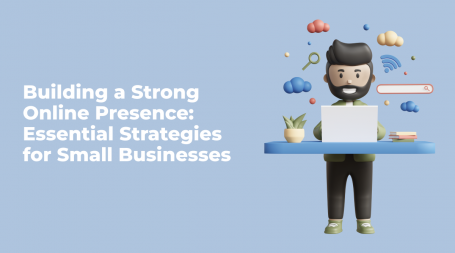When you’re just starting out, it’s best to think about SEO for your website. By getting things started correctly, you can save yourself the trouble of dealing with it later.
Since Google has established itself as the best Internet search engine, and in order to take a good position on it, we’ll give you tips that will enable you to do so if you follow them.
Here are some of the most important Google guidelines for the coming period.
The Reasons to Consider SEO
Developing a website is a lot like building a house – without a solid foundation, a house will collapse. A lot of foundation work needs to be done before you start building walls and slabs, and before you can live in it. One of the biggest mistakes you can make while developing a website is to ignore SEO. Even if you focus on turning your website into something most amazing that a user has ever seen, if you neglect SEO, the effort won’t pay off.
Whether it’s a complete redesign or just an update, here are a few reasons why you should consider SEO:
- allows saving a lot of time;
- you’ll save a lot of money;
- your website will rank better;
- you’ll have more visits.
And the last reason why you need SEO while developing and designing a website is: you’ll make more money.
To help you achieve all this, we have compiled a list of SEO procedures that you must pay attention to when developing and designing your website.
Website Structure and Internal Linking
If your existing website doesn’t have a good look and functionality, visitors will leave it quickly, even before they look at what you have to offer them. Website functionality refers to the way in which the web pages of your website are structured. Google will make it easier to crawl your web pages if they are well organized. You should have a maximum of 3 clicks to the farthest page, and that’s a recommendation.
Internal links bring link juice. It spreads the PageRank to your web pages, which can make them more visible and prominent on Google searches, which means that more users will see them. Google knows better what’s on your site if the pages are well linked to each other.
Tip 1: It’s now necessary to have a blog. You’ll write texts on the blog and thus keep the site constantly updated, and, at the same time, you’ll link the main text on the site from certain texts. If you’re dealing with PVC joinery, selling room doors, security doors… on the blog you’ll write one of the texts about the advantages of PVC joinery and from that text, you’ll link the keyword PVC joinery to the main page in the menu called “PVC joinery”. We hope this is clear to you. We call this internal linking, which helps Google better understand what certain pages of your site are important for.
Crawling or Indexing by Robots
Crawling and indexing your website isn’t as easy as you think. You’ll probably consider different ways in which you can dynamically display your content on your website: AJAX, JavaScript, Flash, XML, etc. You need to make sure that your content is displayed in such a way that it’s easily crawled and indexed by search engines.
As you already know, Flash is no longer used because search engines didn’t know what content was on it and simply didn’t know where to classify such content, so they didn’t index it. Another method of displaying dynamic content that’s known to be very difficult for search engines to crawl and index is AJAX. If you use AJAX to dynamically display content on your website, and Google discourages its use (unless you insist on it), many of your web pages may not be indexed. On a website with over a thousand web pages, not even 20 of them will be indexed.
Tip 2: What should you do? Avoid using AJAX and Flash in iframes on the site; ensure that robots can list all the pages on your site. Be sure to create a SITEMAP and submit it to Google Search Console. This will allow you to track whether all pages of your site are indexed on Google searches or not.
Broken Links
Broken links and errors on websites can make your website very difficult to navigate, which will irritate users and search engines. The “PAGE NOT FOUND” page will always be displayed. Delete all links that led to pages that no longer exist.
Tip 3: What should you do? Browse your website on the Google Search Console and use the “Fetch as Google” tool to identify any crawling errors. Fix all “Not Found” errors for important web pages with the 301 redirections and remember to mark everything you correct with the “Mark as fixed” option.
Design of the Mobile Version of the Website
With more than half of the worldwide searches performed today on mobile devices. It’s crucial that your website is mobile-friendly, tablets, iPhones, etc. Google delivered what it promised back in 2016, which was that mobile searches would overtake desktop searches. Sites that are mobile-friendly will have priority. That’s the standard now – your site must be mobile responsive. If you join forces to develop a mobile and desktop version of the website right at the beginning. It means that you’ll have equal chances with all other sites regarding search engine positions.
Why did Google do that? Well, it’s simple, if the site isn’t optimized for mobile, when you open on this device, the site will be almost unusable and will have a large turnout from the first page viewed, which increases your bounce rating, which is bad. Bounce rates should be between 26% and 40% – anything above or below that means something is wrong. You can look at the bounce rate on Google Analytics that you must install.
Tip 4: What should you do? As Google expands AMP (Accelerated Mobile Pages) to all mobile search results. This is the perfect time to include AMP in your new website. AMP will provide your site’s web pages with lightning speed, which can lower your bounce rating. Admittedly, this is a newer technology. What you can do is make the site responsive, make the images mobile-friendly, and get rid of all those scripts that make it difficult to load the site and aren’t necessary. Use the Mobile-Friendly Test tool to check the loading time of your site and how it’s optimized.
Website Speed and User Experience
Website speed and user experience go hand in hand with mobile optimization as things of great importance to your website. Both of these can be done during the design process to ensure your visitors aren’t annoyed. You can safely test minification, combine and externalize scripts and stylesheets, and delay the loading of JavaScript to make sure the website is running easily.
Tip 5: What should you do? You can use the free tool at tools.pindom.com to check the rating of your site, its loading speed, and script optimization. The first impression is, as in life, very important. Some statistics say that in the first 5 seconds, customers decide whether to stay on your site or leave. If your site doesn’t load during that time, you can see where you stand. Sites made in WordPress are especially problematic if they aren’t well optimized.
Rich Snippet Optimization
Rich snippets attract highly rated users, breadcrumbs, and relevant information. They appear below the hyperlinks in the results to promote your link over someone else’s. Five stars under your link will encourage visitors to click on your website. This all is important because statistics say that almost 70% of visitors see only the first 5 search results. When you add 3-4 Google ads in front of the first results, that’s understandable.
Rich snippets are the equivalent of an online flyer. A compelling copy and beautiful images can encourage people to click on your flyer. This is the first step in attracting them to the website; your other functions will do the rest of the work.
Tip 6: What should you do? In order to be better in the rankings than your competition, you’ll need to add structured data to your website. This will make the data you enter convenient to appear under the rich snippets. There’s also shema.org which is almost mandatory.
Tracking and Conversions
To know what’s happening to you on the site, how long visitors stay, which pages they visit, whether they buy the product or not, whether they use forms on the site or not, and whether they use chat if it’s installed or not, you must have Google Analytics installed. Tracking shows you how effective your website is, as well as what you can improve to earn more revenue.
Tip 7: What should you do? Visit a Google tool called Google Analytics, open an account, and install the tracking code on your website. In Google Analytics, you can set, among other things, specific tracking goals. The goals can be different: did someone buy the product, did they go to the “Thank you” page if it’s a form, did they leave an email (indirectly, displaying forms and contact information – which is previously collected, shaped, and designed with services such as VerticalResponse – which has an impact on SEO), maybe you put a chat on the site so you want to know if people are using it, etc. In addition, you can conduct parallel tests for different purposes to get important information about what to do and where you can progress.
Summary of SEO Actions That Are Necessary
What your new or redesigned website must contain:
- Proper website structure and internal linking.
- Easy crawling of the site by robots without errors on the site.
- Functionality.
- Nice design.
- That there’s no music on the site.
- It’s mobile-friendly.
- To load quickly for the best possible user experience.
- To have rich snippet optimization.
- Tracking.
This may seem too complicated, but if you take the time to do everything right, it will definitely pay off.















